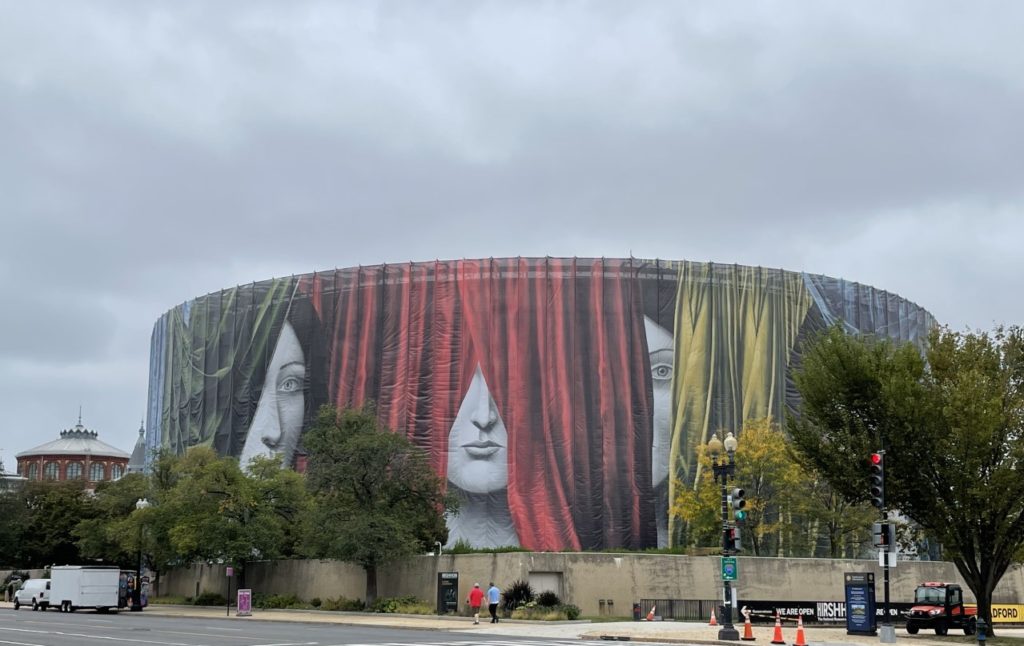
By Southwester Staff
Art is everywhere —indoors and outdoors —at the Hirshhorn Museum.
The exterior of the cylindrical building is now the site of Swiss artist Nicolas Party’s “Draw the Curtain” (2021). The artwork wraps around the building a full 360 degrees, spanning a circumference of 829 feet.
The original pastel painting, digitally collaged and printed onto scrim, transforms the Hirshhorn’s façade into a monumental canvas that stands out against the landscape of predominantly neoclassical buildings on the National Mall.
Several anonymous faces partially hidden by draped curtains gaze directly at the viewer, no matter their vantage point around the building. The portraits, painted in black and white, are based on classical sculpture, while the curtains, painted in shades of green, blue, yellow, and red, are sampled mostly from 17th century Dutch paintings.
Painted in the tradition of trompe l’oeil, the work addresses themes of dupery and illusion. It invites passersby to peek “behind the curtain” on the National Mall and consider what lies behind the façades of the buildings in the nation’s capital.
While “Draw the Curtain” plays with forms traditionally found in works inside a museum, the Hirshhorn is also currently presenting an indoor exhibit that offers multiple possibilities for viewing the outside world.
Laurie Anderson: The Weather is the largest-ever U.S. exhibition of artwork by the groundbreaking multimedia artist, performer, musician and writer Laurie Anderson.
The Hirshhorn’s distinctive architecture offers a unique setting for the ongoing narrative exhibit. The immersive audiovisual experience displays Anderson’s creative process, featuring her work in video, performance, installation and painting, in which she investigates issues such as American identity and the effects of technology on human relationships, often inventing new ways of interacting with technology.
The personal, the poetic and the political blend in works like “Salute” (2021) a new installation featuring robotic flagpoles referencing Anderson’s song “O Superman” (1981), which broadened her following from the downtown New York art world to the MTV generation.
Other new installations include the dystopic “The Knife Sharpeners” (2021) and the immersive “Four Talks” (2021), composed of sculptures and texts that investigate the relationship of language to objects. Another gallery showcases a group of new, monumental paintings on the scale of her large performance works.
Demonstrating the range of Anderson’s multimedia practice, the exhibit features video excerpts from virtual-reality pieces as well as photographic works documenting performances from the 1970s. Also on display are several violins and other musical instruments that Anderson designed and altered, alongside photographs from her key performances from 1971 to present.
A series of live performances by Anderson is scheduled from January 2022 to July 2022.

